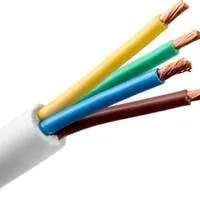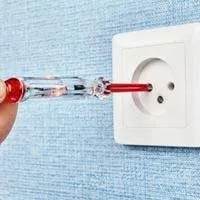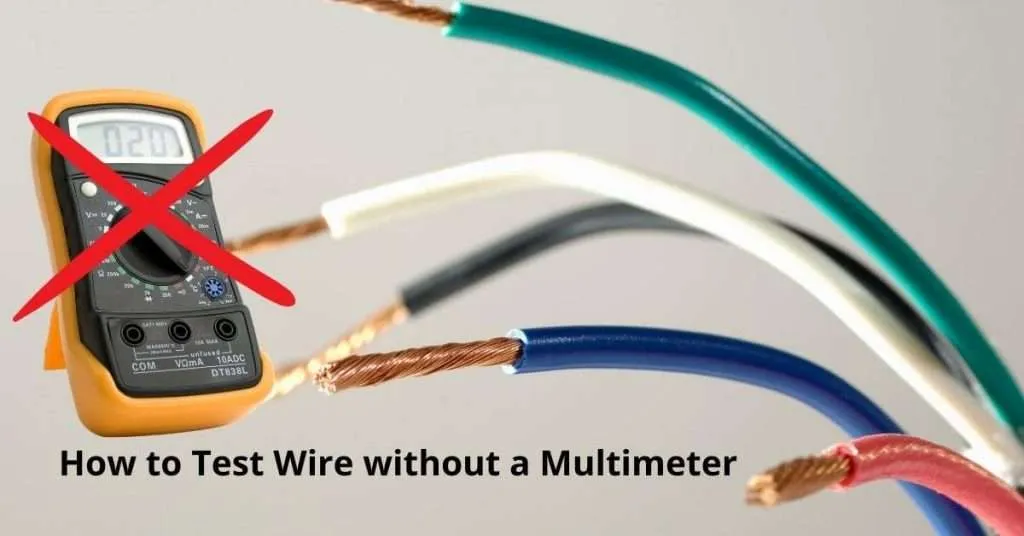When installing an appliance or an electrical connection in your home, you must test wires to detect the outlet’s live, neutral, and ground wires. It helps you to make a proper connection and detect a fault in a circuit. Are you wondering how to test wire without a multimeter?
This post will teach various procedures to test a wire without a multimeter.
Table of Contents
ToggleHow to test wire without a multimeter
We can use a tester screwdriver, a non-contact voltage tester, and a bulb socket to test wires without a multimeter. We can identify the circuit’s hot, neutral, and ground wires by testing wires.
Below we have discussed every possible way to test wires without a multimeter.
Test 1: Identity with color code
If wiring is done in a standard way followed in the US, then the green wire is used for the ground connection, black is for live wire, and blue is the neutral wire.
But never trust the colors until you’re sure because it depends upon the installation and which wire is assigned for a specific purpose. Also, different colored wires are used in other regions.
Test 2: Using a tester screwdriver
A tester screwdriver is widely used to detect the live or neutral wire.
When current passes to your finger, a sensor inside the tester detects a path to pass the current, and a red neon bulb light displays a complete circuit.
Steps to test wire with a tester screwdriver
- Turn on the socket (if connected to a button).
- Put your finger on the head (top) of the screwdriver, made of brass.
- Insert the screwdriver into the socket holes, or connect it to bare wire ends.
- If the neon bulb inside the tester displays a red light, you have found the live wire, and the rest of the wires are either ground or neutral.
- Otherwise, connect your screwdriver to other wires or holes in the socket until the tester bulb glows.
Test 3: Using a non-contact voltage tester
A non-contact voltage tester works on the principle of capacitive coupling (transfer of energy from one circuit to another). A voltage tester detects the magnetic field in the wire created due to the current flow.
We also call it a non-contact voltage tester because there is no need for direct contact between the tester and wires to detect current.
Steps to test wire with a non-contact voltage tester
- Turn on the voltage tester.
- Bring the narrow end of the tester near every wire.
- When current is detected in a live wire, the tester beeps, or a bulb glows inside it.
Test 4: Bulb Test
You can detect live wire in a socket or outlet using a bulb. Connect two small wires to the holder and fix a bulb in it. Let’s follow further steps.
Test wires using a bulb holder
- After you have set up a bulb holder, insert both of its wires inside an outlet.
- One by one, insert wires in different holes of the socket. The two holes where the bulb doesn’t glow are neutral, and ground terminals, and one left is the live wire hole because a live wire is necessary to light a bulb or run any appliance.
- To confirm this, detach one wire from any hole and insert it in the third hole of the socket. The bulb will glow, indicating the live wire in the socket operated at the end.
You can also do this test in another way.
- Ordinarily, yellow or green with a yellow stripe wire is used for grounding.
- Detect ground wire with color and attach one wire of holder with it permanently (till the end of the test).
- Connect the second wire of the holder one by one with the left wires in the outlet or holes in the socket.
- When the bulb lights up, a live wire or phase has been attached to the holder wire.
Test 5: Test wires with an outlet tester
An outlet tester detects disconnected wires in an outlet circuit. Two out of three lights on the tester glow in different scenarios, such as open ground, open neutral, open live, and reversed wire connections.
To test an outlet, insert the tester inside a socket and turn on the power button.
Compare the guide labeled on the tester with the glowing lights to know if the circuit is correct or faulty.
Conclusion
You can detect a live wire without a multimeter with easy steps and inexpensive equipment such as a tester screwdriver and voltage tester. But don’t forget to take safety precautions before any test, as you have to test high-voltage wires.
Hopefully, after reading this article, you can quickly test a wire in a socket or outlet to make a secure connection.
Related Guides:




